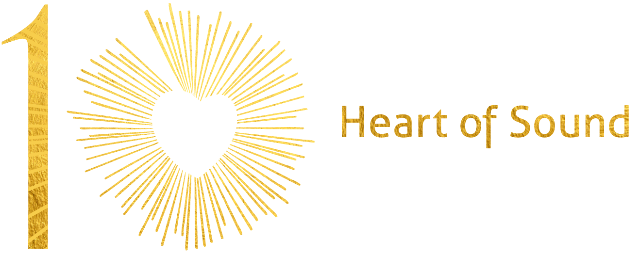Sound Healing Training Integrity: The Importance of Sanskrit Mantra and Nada Yoga Sound Therapy

In recent years, the field of sound healing has gained significant popularity, with numerous individuals seeking complementary therapies through the power of sound. Even the football players on season three of Ted Lasso are using mantra meditation to access their inner powers! This made me LOL, but it's for real... the power of sound and mantra has gone mainstream.
As a certified yoga therapist and member of the International Association of Yoga Therapists, specializing in sound and mantra, I am deeply committed to upholding the principles of integrity within the growing sound healing and mantra community.
In this blog post, I want to shed light on the critical importance of proper training in:
- Accurate Sanskrit mantra pronunciation,
- Therapeutic use of mantra,
- Ethical guidelines regarding cultural appropriation,
- and a general knowledge of Nada Yoga sound therapy.
Many sound healing practitioners and mantra teachers (as well as their sound therapy certification trainers themselves) may have blind spots in these areas, certainly not due to lack of good intentions! (Everyone I've ever met who starts off in a field of service like sound healing or mantra has the very best of intentions.) I believe that you can't fault someone for not knowing what they don't know... and we've all been there! The purpose of this blog post about sound healing training integrity is to highlight 4 crucial areas of understanding, so we can all embody a high standard of professionalism in the field.
1. Accurate Sanskrit Mantra Pronunciation
Sanskrit, the ancient language of India, carries profound spiritual and vibrational qualities. Mantras, when chanted correctly, can evoke powerful healing and transformative energies. It is of utmost importance that sound healers receive proper training in the accurate pronunciation of Sanskrit mantras. Mispronunciation can lead to unintended consequences and distort the intended healing vibrations.
If you're not sure whether or not your sound healing academy is one of the rare schools that covered Sanskrit Mantra 101 effectively, here's a video I made about 10 years ago that tells you the least you need to know!
Such "Do you know what you don't know" inquiry is necessary, because at this point, the scale of the problem of misappropriation and mispronunciation is HUGE.
Most yoga teacher trainers and most sound healing trainers, academies, certification institutes, and schools do not use or effectively teach accurate pronunciation of the Sanskrit mantras. This is a daunting issue, which easily overwhelms me. However, my love for this subject has kept me passionately teaching about the benefits of nuanced, sensitive, reverent Sanskrit sounds for 15 years now.
By acquiring the necessary skills and knowledge, sound healers can ensure the authenticity and effectiveness of their practice, nurturing a deeper connection with the transformative power inherent in these sacred sounds!
2. Therapeutic Use of Sanskrit Mantras:
Beyond accurate pronunciation, understanding the therapeutic application of Sanskrit mantras is crucial. Each mantra carries specific intentions, vibrations, and healing qualities which are embedded in the sound production. Inaccurate sound = unintended consequences... sometimes even the opposite therapeutic effect!
By comprehending the nuances and subtleties of each mantra, sound healers can harness their transformative potential effectively. Training in the Sanskrit alphabet is prerequisite to training in the therapeutic use of Sanskrit mantras, enabling practitioners to create tailored healing experiences that address the unique needs of individuals, promoting balance and well-being.
😲 Don't dismay! I also didn't know what I didn't know for over 13 years myself. I talk about my passion for the sounds (not the grammar!), how I managed to take a Sanskrit Mantra Teacher Training course without learning a lick of Sanskrit (yep - just because someone owns the URL sanskrit mantra dot com doesn't mean they're gonna teach you Sanskrit!), and how I later fell in love with the thrilling nuance of Sanskrit sounds myself in the Learn Sanskrit Mantra Pronunciation playlist on Youtube. Here's Part 1:
3. Ethical Guidelines Regarding Cultural Appropriation:
The issue of cultural appropriation within the sound healing community also deserves our sincere attention. If we don't know what we don't know, and someone tells us "Hey, you've got a blind spot!" about a practice from another culture, the empathetic, non-violent, culturally sensitive response is to learn or re-learn.
It might have been common practice a decade ago to cherry pick sound therapy practices, tools, and techniques from various ancient and indigenous cultures, ignore the nuances in those sound healing methods, and claim "It's the intention/devotion/thought that counts." Discerning clientele now and into the future will demand a higher standard of integrity.
Sound healing certification programs or yoga teacher training programs that have Sanskrit mantra modules can easily outsource this specialized knowledge to trainers who focus on this area, such as in our Sanskrit 101 module for trainers designed to integrate into other trainers' programs.
Sound healers or anyone lucky to be in a position to teach and share mantra must approach the use of sacred cultural practices, including mantras and traditional sound instruments, with deep respect and cultural sensitivity. Proper training should include comprehensive ethical guidelines to ensure practitioners engage in sound healing practices that honor the origins of these traditions.
By fostering a culture of humility, respect, and understanding, we can prevent the dilution or misrepresentation of ancient wisdom, fostering a more inclusive and harmonious sound healing community.
4. Nada Yoga Sound Therapy:
Nada Yoga, the yoga of sound, is an integral part of sound healing. Understanding the principles and practices of Nada Yoga is essential for sound healers to develop a comprehensive approach to their work. Nada Yoga teaches us to cultivate deep listening, attune our awareness to the subtleties of sound, and recognize the transformative power of sound vibrations. 
Here's a photo of one of our 200hr Sound & Mantra Teacher Training students learning foundational music nāda yoga skills on harmonium.
Conclusion:
As sound healing gains recognition as a powerful modality for healing and self-discovery (even on Ted Lasso!), the need for integrity within the sound healing community becomes increasingly important.
Sound healers must possess accurate Sanskrit mantra pronunciation skills, understand the therapeutic applications of mantras, adhere to ethical guidelines regarding cultural appropriation, and develop a solid foundation in Nada Yoga sound therapy. By committing ourselves to proper training and continuous learning, we can ensure that the sound healing practices we offer are grounded in authenticity, respect, and deep understanding, ultimately serving as catalysts for profound transformation and healing.
Our team at Heart of Sound sincerely endeavors to offer the highest quality training in mantra and nāda yoga. You are welcome to check out our courses, which range from free offers to advanced teacher trainings and professional development courses.
May our exploration of sound as a therapeutic tool for transformation inspire us to move in a more musical way in the world, with ourselves, and others!


